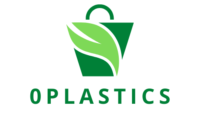What is the future of plastic alternatives, and how can they contribute to a more sustainable future?
The future of plastic alternatives holds great promise and is integral to achieving a more sustainable future. Here’s how these alternatives are shaping the path to sustainability: 1. Reduced Environmental Impact: 2. Resource Efficiency: 3. Circular Economy: 4. Innovation and Research: 5. Consumer Awareness: 6. Policy Support: 7. Sustainable Supply Chains: 8. Collaboration and Partnerships: …
